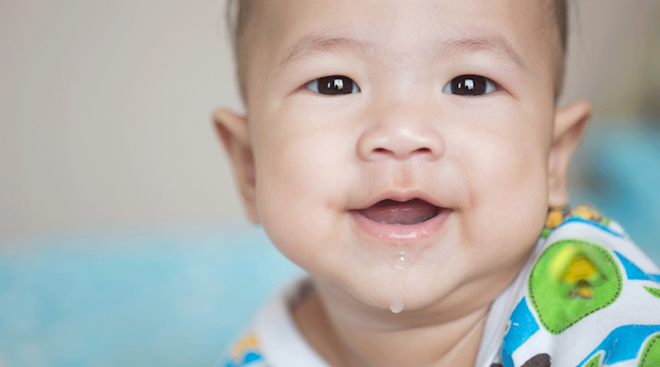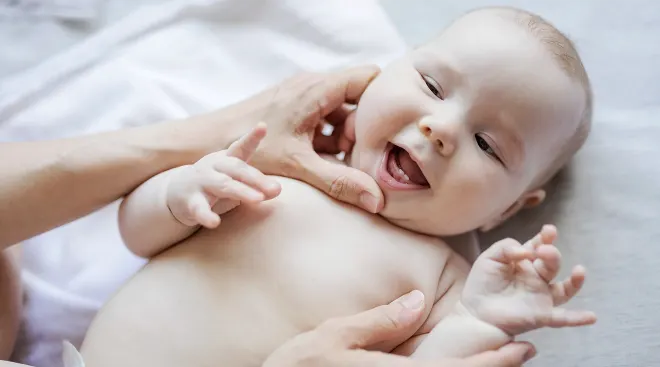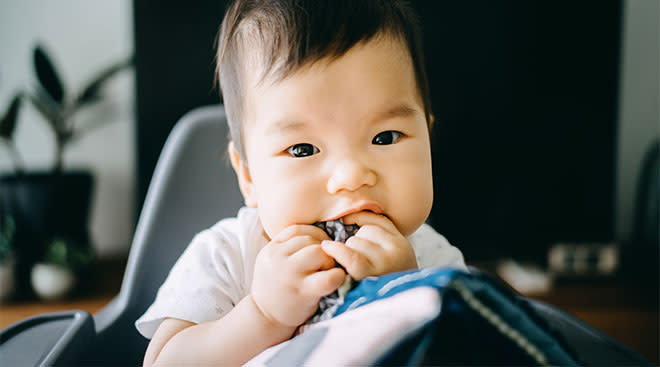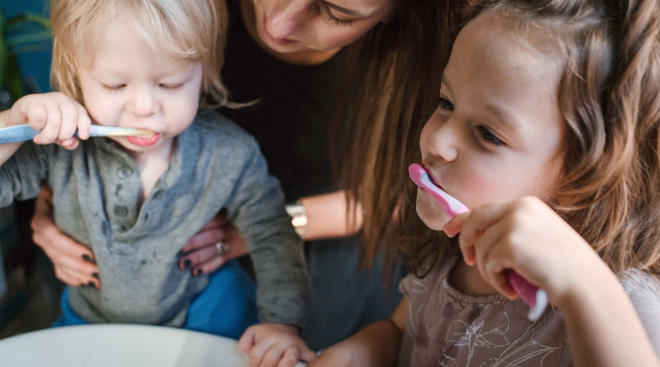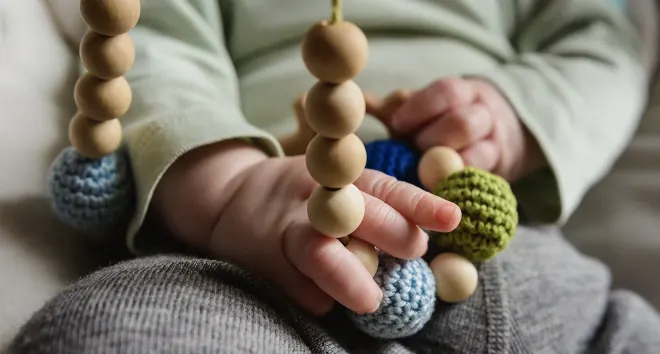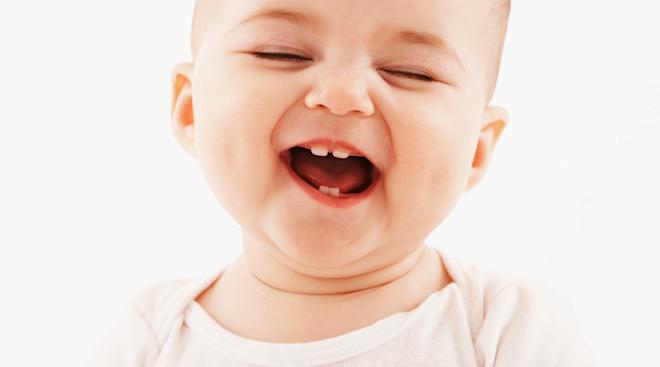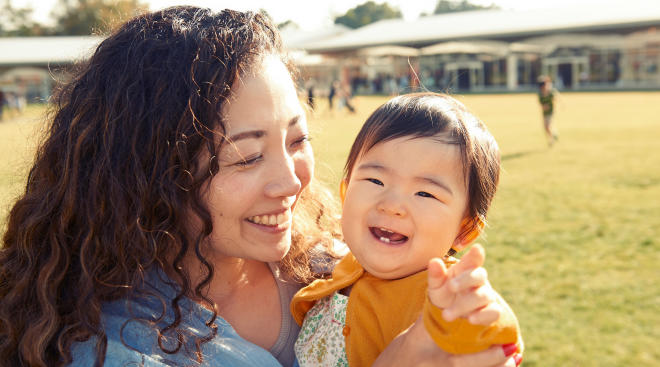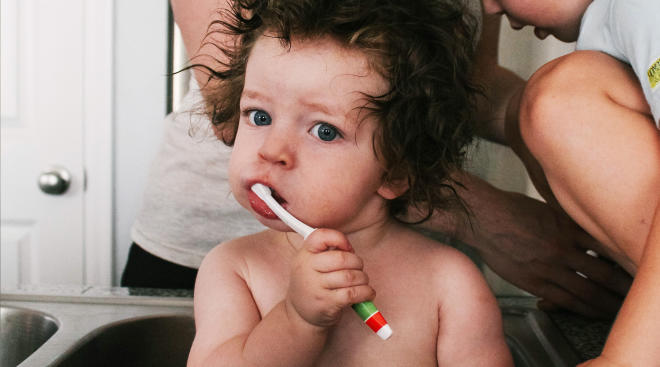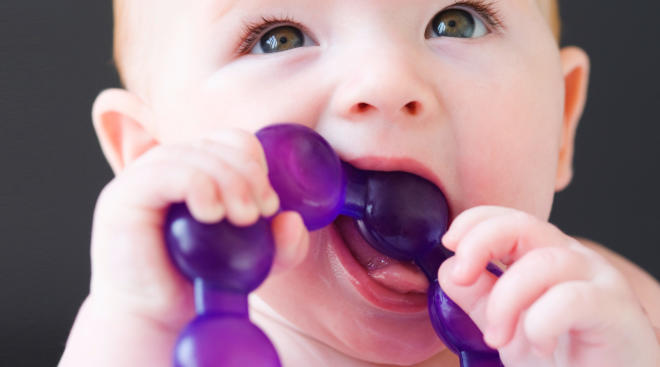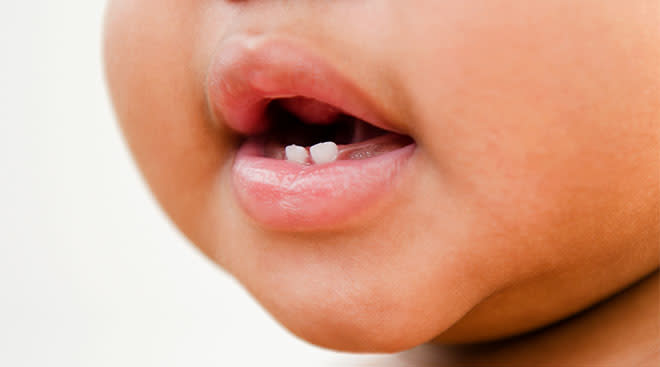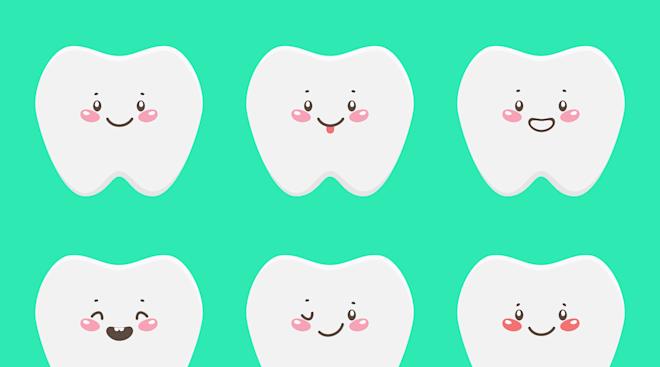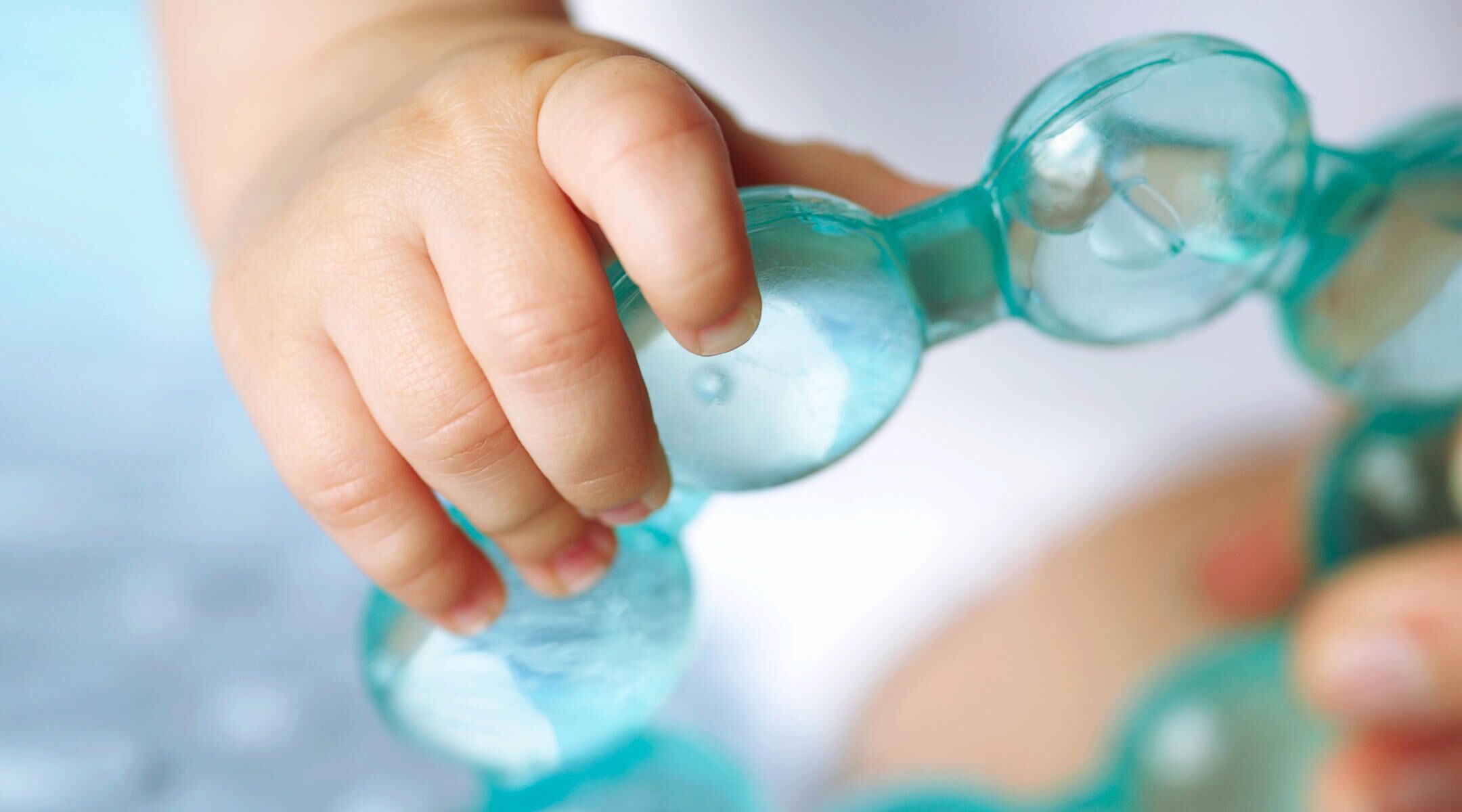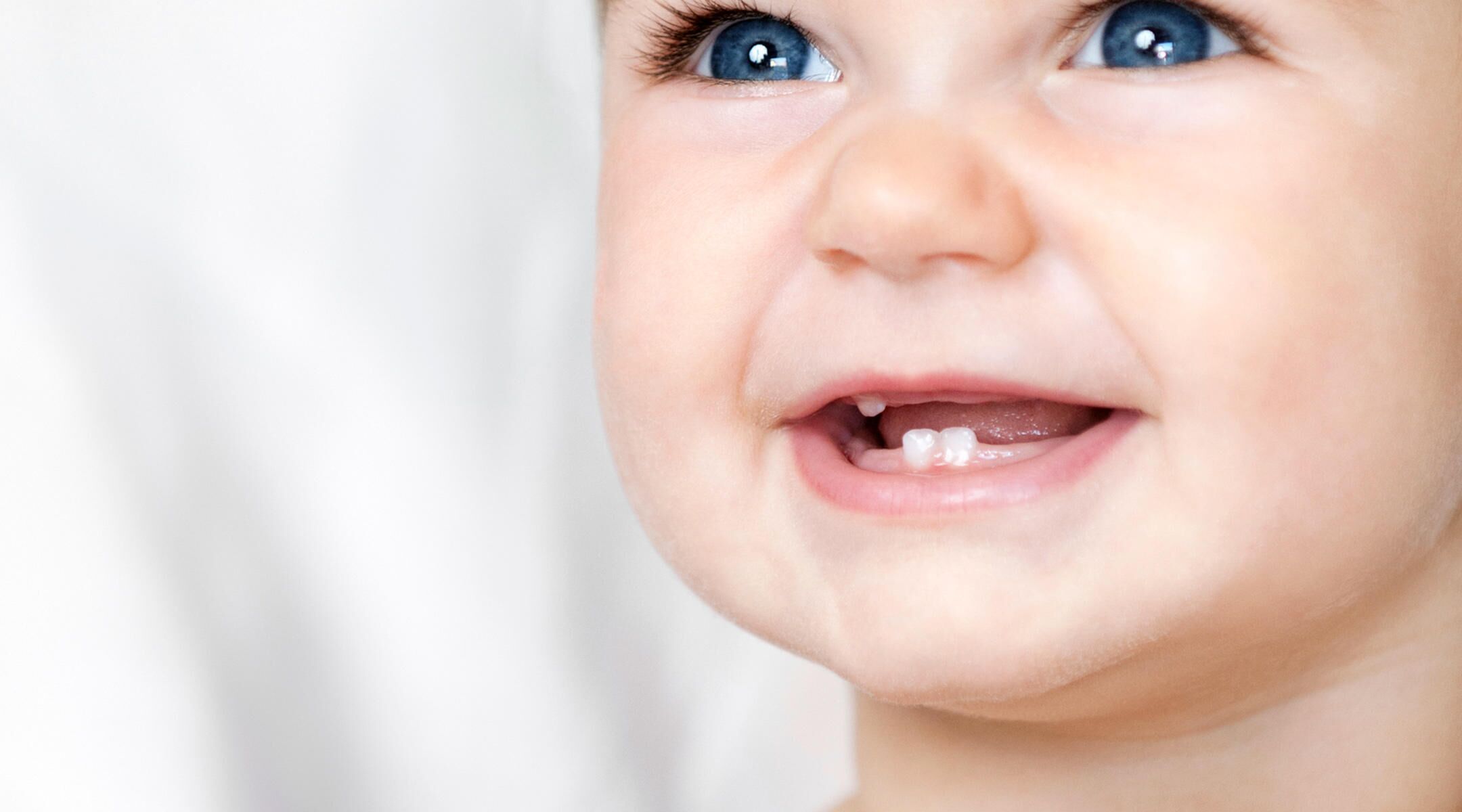Toddler Teething: What Are the 2 Year Molars?
Watching your child’s baby teeth come in can be an exciting but painful process—for them and for you. By them time your child reaches toddlerhood, they’re probably well into the throes of teething, and likely have a few baby teeth to show for it. The last of the toddler teeth to emerge will be their two-year molars. But when do these second molars come in, and how to help your child through this bout of toddler teething? Here, two pediatric dental experts break it down.
According to Ashley Lerman, DDS, a board-certified pediatric dentist at Firstgrin, the two-year molars—also known as second molars—are the last set of teeth that erupt in your toddler’s mouth. They’re the four toddler teeth located in the very back on either side, at the top and bottom. The second molars are wide and flat to “help children grind food and speak,” explains Danette Ocegueda, MSDHA, RDH, FADHA, a registered dental hygienist and a professional education manager with Philips Oral Healthcare.
Second molars are usually the last toddler teeth to erupt, some time between 23 to 33 months, according to the American Dental Association (ADA). (This proximity to your toddler’s second birthday is what earned them the name “two year molars.”) The lower set of second molars usually comes in first, erupting between 23 and 31 months, while the upper set often comes in between 25 and 33 months, Ocegueda says. However, like with so many other milestones, there’s a range, and she notes that the two-year molars could erupt as early as 16 to 18 months. “Some may show up early, others could come in a bit later—all kids have their own individual timeline,” Lerman adds.
Wondering how long it takes for the second molars to fully erupt? “It’s a bit like watching a flower bloom,” Lerman says. “It can take a few months from the moment you notice it peeking through the gum until it’s completely out.” But, again, the time it takes for two-year molars to fully come in will also vary from child to child.
Caring for the 2 year molars
Caring for your toddler’s gums is extra important because they’re softer than adults’ gums. By the time your child’s second molars begin to appear, odds are that they’re already using a soft-bristled baby toothbrush. Ocegueda recommends keeping this up and brushing your tot’s teeth and gums twice a day with fluoride toothpaste. Once your little one is largely through their toddler teething phase and reaches the age of 3, she recommends they begin to use a power toothbrush that’s gentle, but effective in cleaning.
Toddler teething symptoms aren’t necessarily different from baby teething symptoms, Lerman says. In fact, many of them might look the same. While exact symptoms will vary from child to child, below are some common toddler teething symptoms to look out for:
-
Pain and discomfort: As a result of toddler teething pain, you might see your child chewing on objects or grinding their teeth to find some comfort. They may also experience a decreased appetite for a short amount of time and increased irritability.
-
Disrupted sleep: “Discomfort from second molars coming through may cause sleeping trouble,” Ocegueda says. The pain may be worse at night since there are “fewer distractions” from it than during the day, she adds.
-
Slightly elevated temperature: Ocegueda notes this uptick may be between 97.3 and 98.7 degrees Fahrenheit—but it doesn’t count as a fever. Both experts note that if your kiddo has a fever over 100.4 degrees Fahrenheit, vomiting, experiencing diarrhea, coughing or having other respiratory symptoms, it may be an indication that there’s something else going on, like an infection. If you’re noticing any of these symptoms, contact your pediatrician to get your child checked out.
-
Excessive or increased drooling: Increased drooling can be a sign of teething, Lerman says, and can cause a drool rash around the mouth. Plus, it may lead to looser stools than usual. However, she warns it’s important to remember that children’s poop constantly changes; she emphasizes that diarrhea itself isn’t a symptom of teething. “If you’re concerned about persistent diarrhea and dehydration, seek advice from your pediatrician to make sure it’s not something more serious.”
-
Red and swollen gums: Lerman says swollen and slightly red gums can be a sign of toddler teething. “You may also notice your baby rubbing their cheeks and ears. This is because the nerves to the gums are close to their ears, causing them to feel discomfort all the way up to their ears,” she explains. However, this isn’t the same type of ear pain they’d experience during an ear infection, Ocegueda notes. If your child seems to have ear discomfort and you’re not sure what it is, check in with your pediatrician.
Toddler teething symptoms can last anywhere from a few days to a few weeks, Ocegueda says. And while It can be hard to watch them in discomfort, you can rest assured knowing there are some ways to proactively offer relief. Below, Ocegueda gives her recommendations for relieving painful toddler teething symptoms:
- Use teething rings and toys
- Rub your child’s gums with a clean finger for some pain relief
- Offer them a cold, wet washcloth soaked in ice water
- Keep the skin around their mouth moisturized (especially if they’re experiencing dryness from excessive drooling)
- Give them acetaminophen, ibuprofen or another pain medication—approved by your pediatrician—as needed
- Provide fun distractions that help take their mind off the pain
While the above options offer safe and effective ways to alleviate toddler teething pain, there are some marketed methods you’ll want to avoid, Lerman cautions. “Teething gels on the market are not always regulated for safety or efficacy,” she explains, addings that formulas with lidocaine, benzocaine or belladonna have all been found to have “adverse side effects for children when swallowed.” Lerman also cautions against using amber teething necklaces and bracelets. “Often marketed for teething relief, [these] have small pieces that can break off, presenting a choking hazard. The necklace itself can also lead to strangulation,” she says. “They serve more as a placebo effect and, due to safety concerns and lack of evidence to support efficacy, they’re not recommended.”
Three-year molars are “more of a myth than a milestone,” Lerman says. Ocegueda agrees, adding that the two-year molars are the last set of baby teeth a child will get. While the exact timing will vary, Ocegueda notes that by 3 years old, children should have all 20 of their baby teeth. “See your dental professional if your child doesn’t have all their baby teeth by the age of 3-and-a-half,” she adds. After the two-year molars, the next set of teeth a child will get is their first permanent (adult) molars, Lerman says, which emerge behind the second molars around age 6.
Along with the symptoms mentioned above (diarrhea, vomiting, a fever or respiratory symptoms), you should also reach out to your pediatrician or a pediatric dentist if your at-home pain management strategies aren’t proving effective for your toddler’s teething symptoms. They’ll help you come up with a better course of action.
Wondering when your child should start going to the dentist? Both experts say a child’s first appointment should be scheduled after their first birthday or as soon as you see their first tooth appear. “After that, it’s standard to have your child see a dental professional for regular check-ups twice a year,” Ocegueda adds. “Once children have all their teeth, it’s important for them to start using oral healthcare tools to help them establish healthy habits that will last a lifetime.”
Please note: The Bump and the materials and information it contains are not intended to, and do not constitute, medical or other health advice or diagnosis and should not be used as such. You should always consult with a qualified physician or health professional about your specific circumstances.
Plus, more from The Bump:
Ashley Lerman, DDS, is a board-certified pediatric dentist and the founder of Firstgrin, which provides personalized oral care boxes to help caregivers focus on dental health from a young age. She received her bachelor's degree from the Rensselaer Polytechnic Institute and earned her doctorate of dental surgery from Columbia University College of Dental Medicine.
Danette Ocegueda, MSDHA, RDH, FADHA, is a registered dental hygienist with over 30 years of experience, as well as a professional education manager with Philips Oral Healthcare. She earned her master’s degree in dental hygiene education from University of Missouri-Kansas City.
Mouth Healthy (American Dental Association), Eruption Charts, 2023
Learn how we ensure the accuracy of our content through our editorial and medical review process.
Navigate forward to interact with the calendar and select a date. Press the question mark key to get the keyboard shortcuts for changing dates.


































